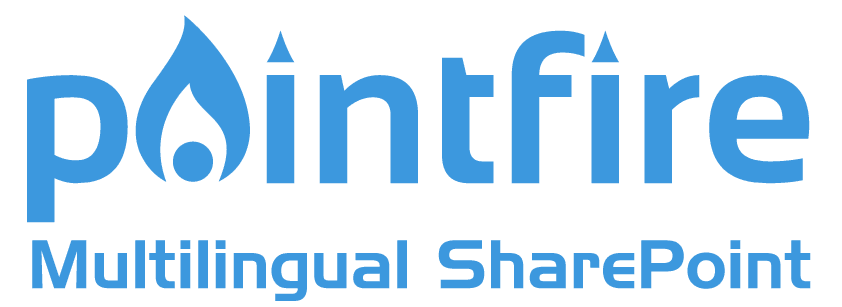The new multilingual page publishing feature for Modern sites is now available in Targeted Release. This is a good time to go through its main features in a bit more detail.
This SharePoint Online feature enables the publishing and consumption of pages and news in multiple languages in a modern SharePoint communication site. Multi-lingual page publishing means that on modern communication sites, site owners can determine in what languages they want to translate individual pages and news posts. This is different from Variations in that the translated pages are on the same multilingual site, but similar in that it copies pages and you have to translate them to the other language.
Turning it on
This feature must be turned on before it has any effect. The activation is not, as you might think, in the site features section, but in Language settings.
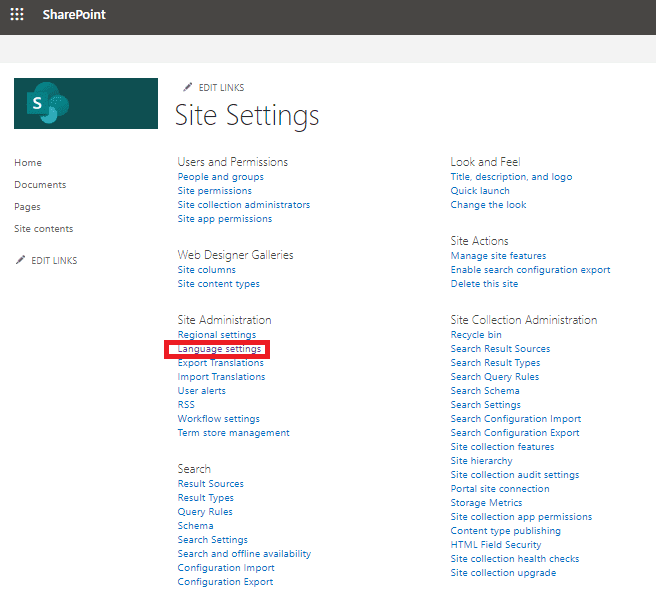
Language settings was there before, this is where you used to set the Alternate languages for a site. You can still do that more or less like before if you don't turn the feature on, by clicking on "Show advanced settings"
The new option is called "Enable pages and news to be translated into multiple languages"
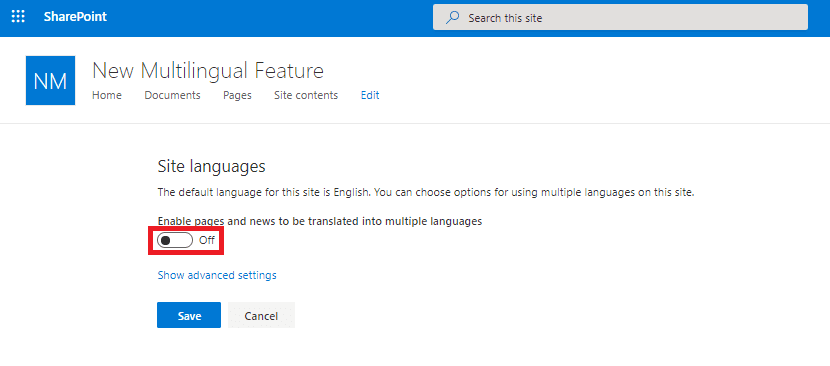
The switch to turn on that feature appears on Communication sites, either new ones or existing ones. It does not appear on Classic sites and it does not even appear on Modern Team sites.
If you click on "Show advanced settings" without enabling the feature, you can pick the list of alternate languages like before, and like before they are all turned on by default.
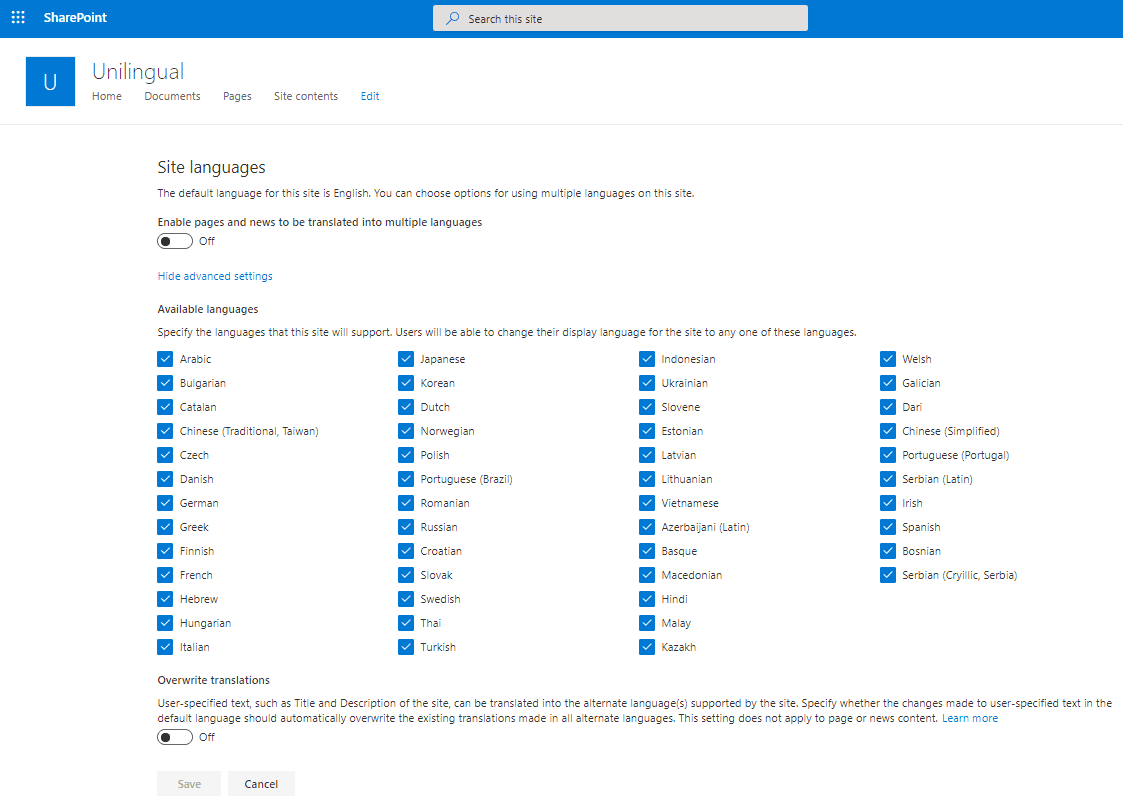
Parenthesis, what is Overwrite translations at the bottom? It’s the same as before, with a different wording. It has to do with what happens when you change MUI-enabled text in the site default language when it has has already been translated, will it leave the translations alone, or will it overwrite them with the new text in the original language as an indication that they need to be re-translated.
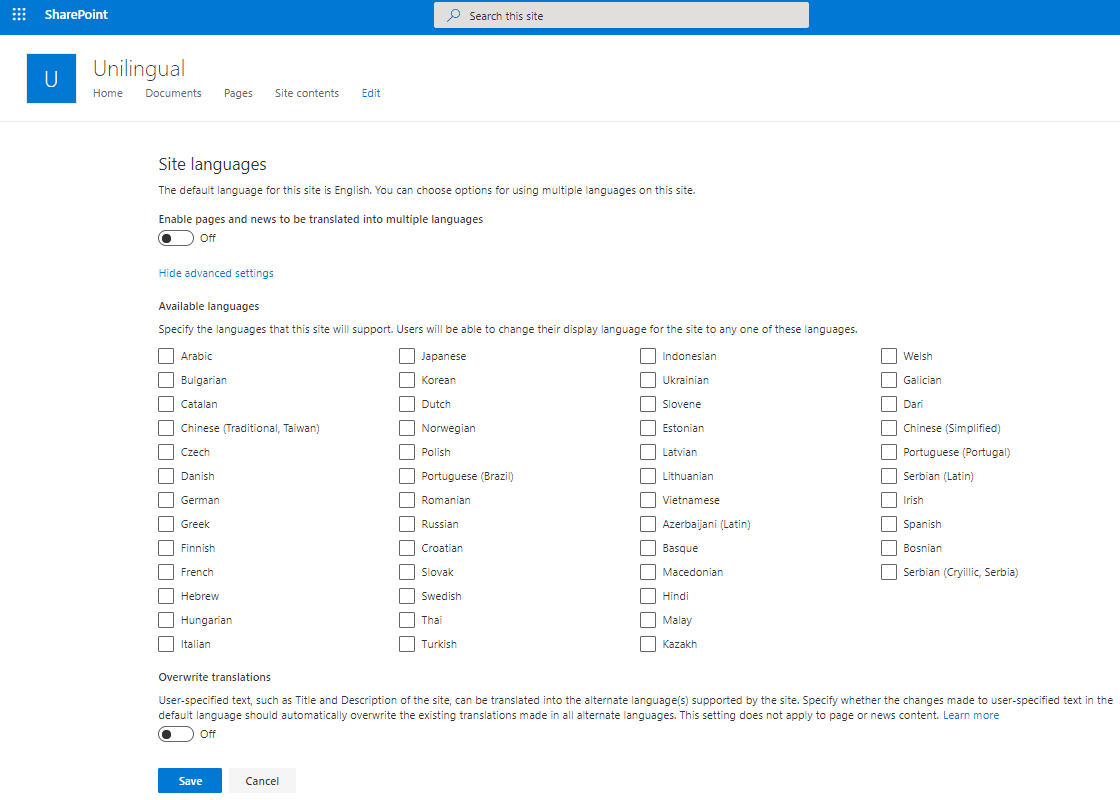
The list of languages is the same as it was before with one exception, Serbian (Latin) has been dropped.
To select alternate languages, you can type a few letters of the language name or select it from the dropdown list.
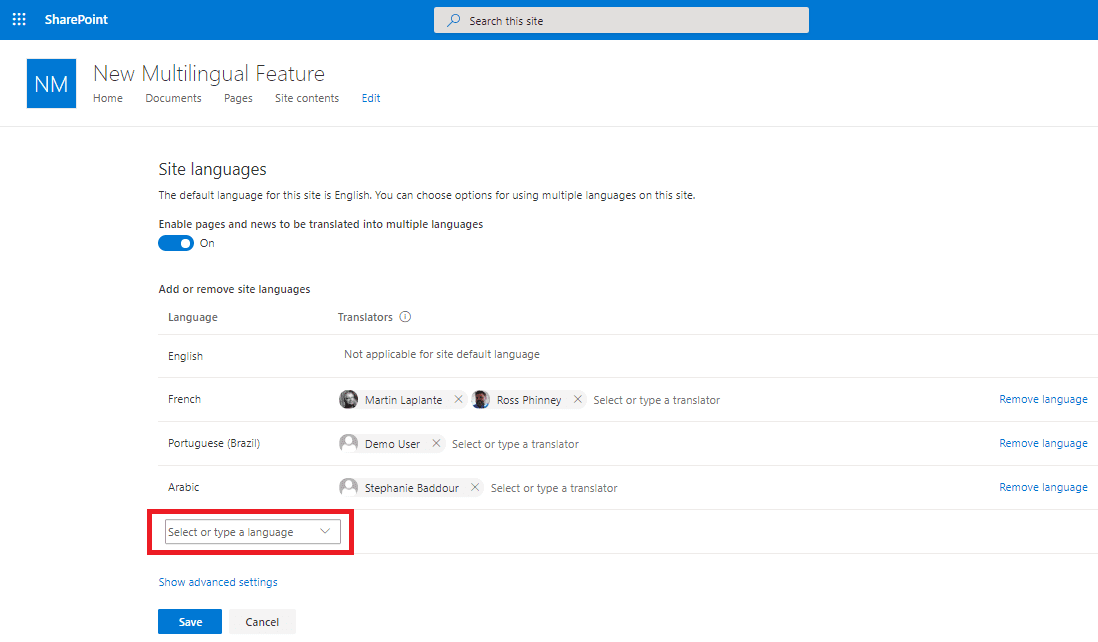
Selecting a language has two effects: it adds it to the list of alternate languages which determines the languages supported by the multilingual user interface (MUI), and it adds it to the list of languages to which site pages can be translated.
For each language you can select one or more "translator". These are accounts that are notified by email whenever a page on this site should be translated to that language. Naming someone as the translator does not give them rights to edit the pages, it simply sends them the email that contains a link to the page. It is possible to send the email to external users, and it is possible to send it to people with no access to the list or to the site. Sending it to a group works as well.
However if you type an email that’s not in AAD, then it gives a message when you save “Can’t save setting now. Try again later”. Always remember to hit save.
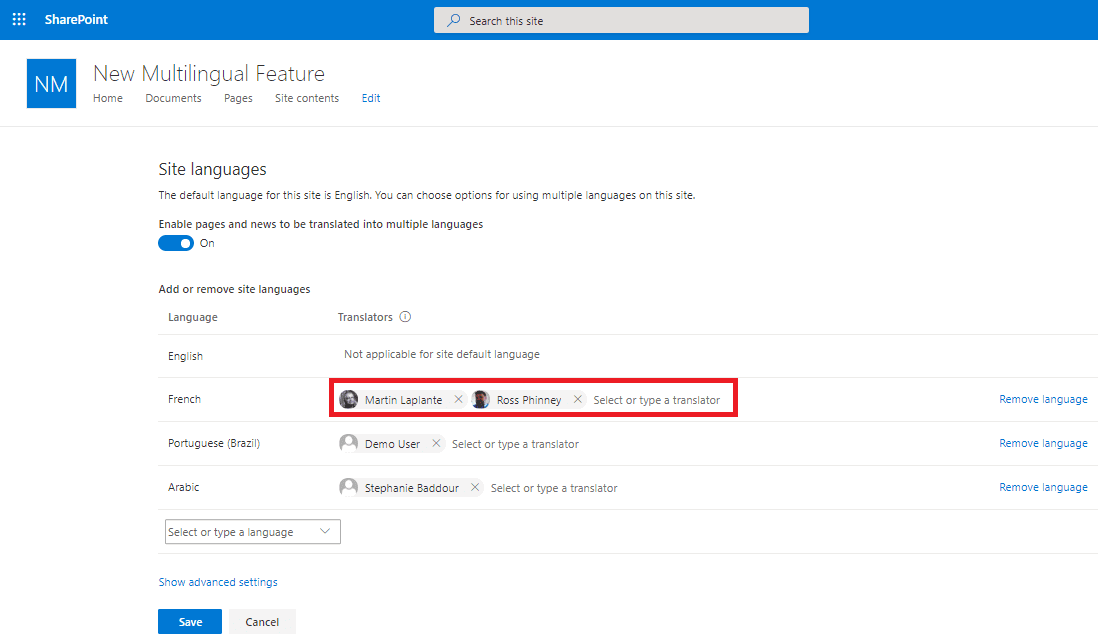
Adding pages
Since this is a Communication site, pages in the site default language can be added to the Site Pages library like before using Add a Page or by creating a News post. Jumping ahead, creating a page, even with a different language selected, or using a language-specific News web part will always create pages that are assumed to be in the site default language and are in the root directory of the Site Pages library.
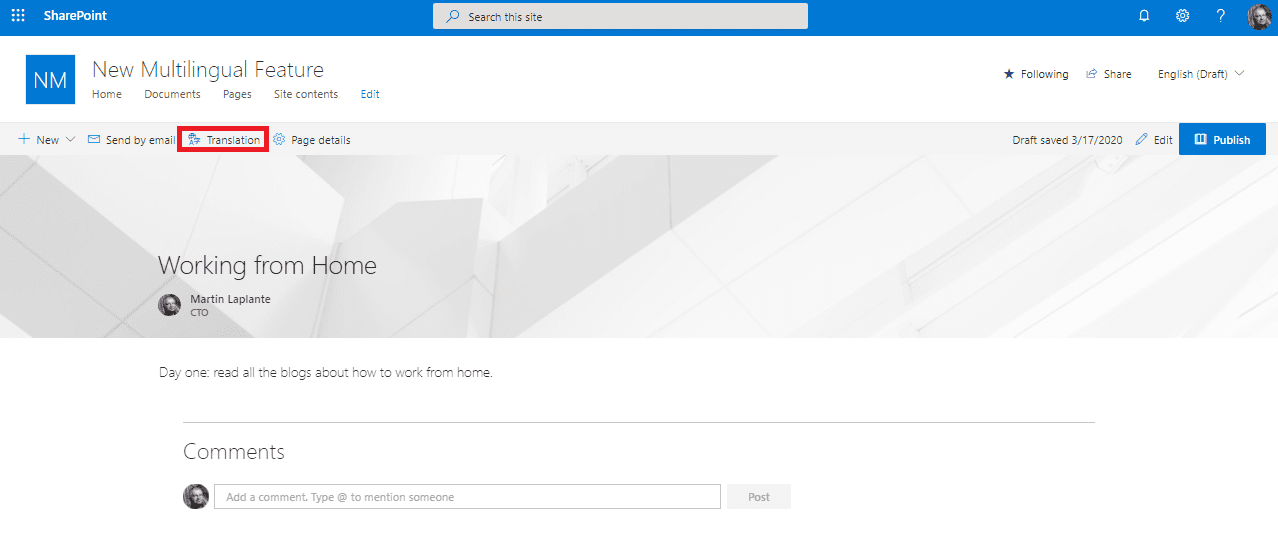
"Translate" pages
You notice in the page menu bar that there is a "translation" button. This will open a translation pane on the right.
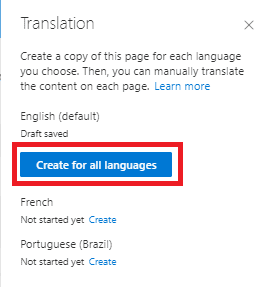
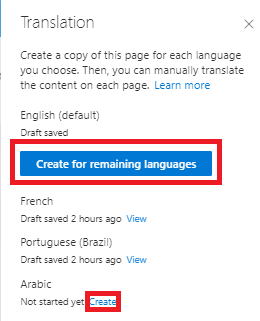
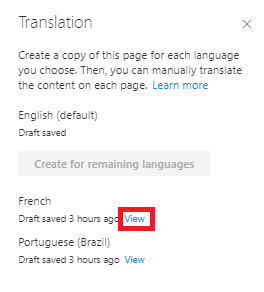
2) Follow the email link in the email that is sent to translators when the page is created
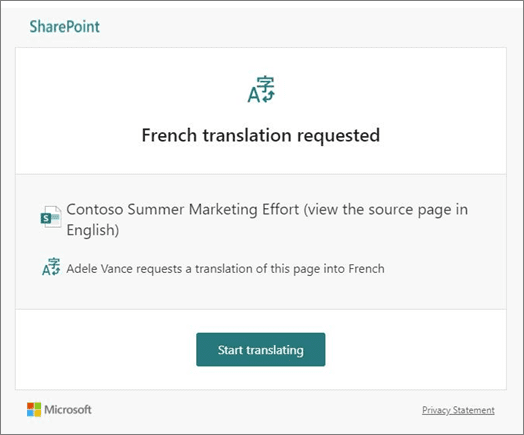
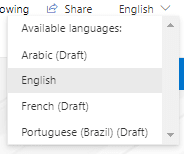
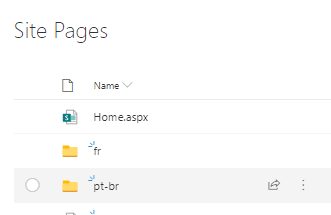

This message remains until the page has been Saved once, even if you went in edit mode and changed nothing and it autosaved. You (or someone else) are responsible for translating the content of the page, its title and the title and content of every webpart. Remind translators to delete, not translate, the “Translate into {Language name}: ” part of the title.
User Language and Issue with Right-to-Left languages
Depending on the user's SharePoint language, there is a possibility of the user being redirected to the version of the same page in the user's language. This redirection is not persistent, it is easy to navigate to pages in other languages without changing your own language.
When you go to a page in a right-to-left language while your current language is one that has left-to-right layout, you will see it with a left-to-right layout while editing. The letters are RTL but the layout is LTR.
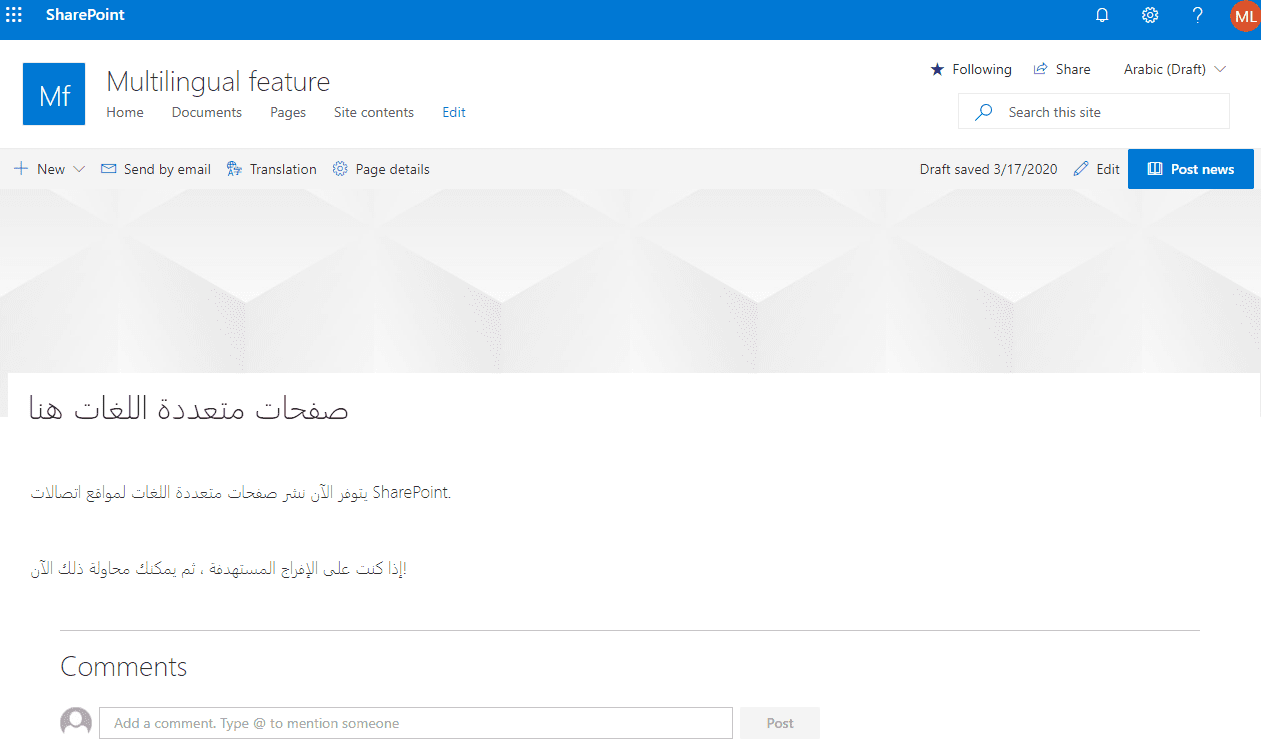
If your current language is a right-to-left one, then you will see a right-to-left layout. The layout depends on the user’s language, not the language of the page or of the site. For those interested in the technical details, the "lang" and "dir" properties of the page's html element follow the user language settings.
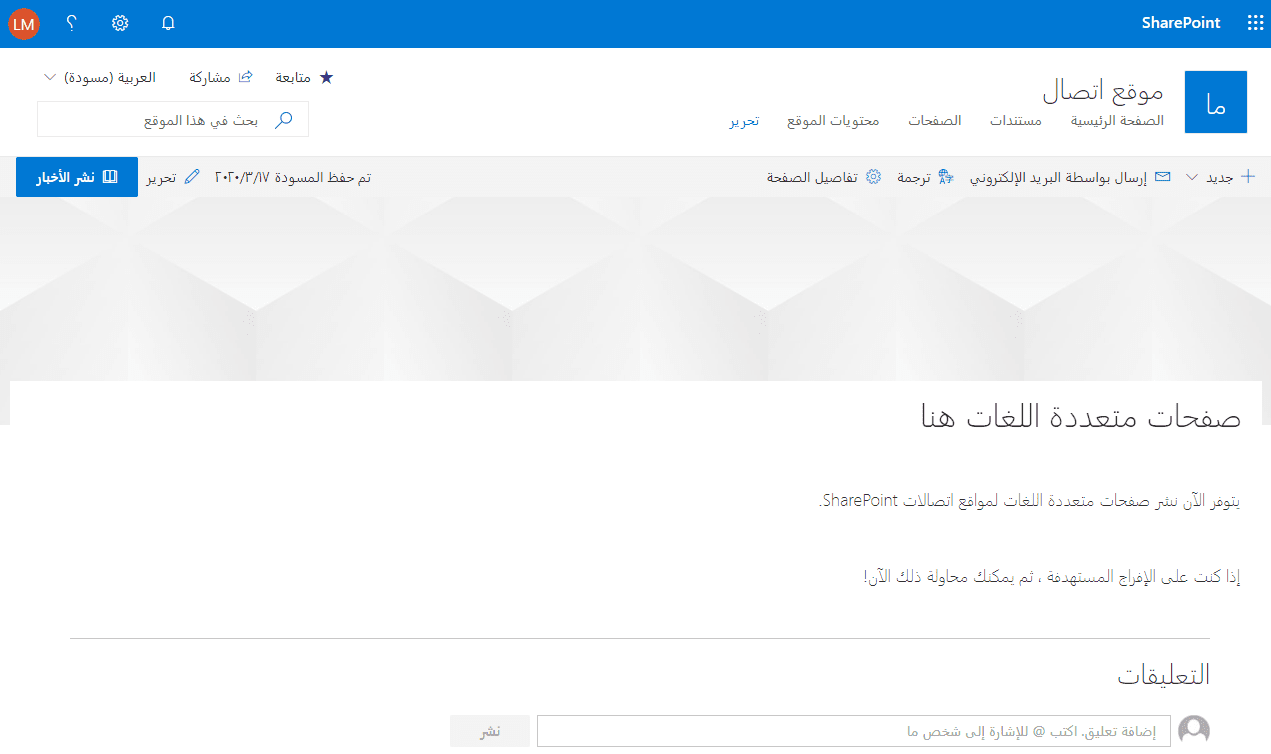
Language of the user interface
Deleting pages
What if you make a change to the original page? Can you re-copy it to the translations? No (again, unless you have PointFire Translator). However now is a good time for human translators to discover the new SharePoint page version comparison feature to highlight what has changed and determine what need to be re-translated.
It won’t re-copy unless you delete the translated copy. The feature adapts well to deleting the translated copy. The “Available languages” menu adapts, as does the translation pane.
If you delete the original, the copies stay. However they feel some distress. If you click on the “Available languages” menu while on one of the orphaned copies, it spins and never returns.
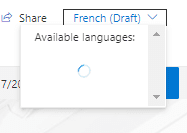
f you turn off the feature, all the pages stay, but most of the language functionality is removed. The functionality returns if the feature is turned back on again.
News Webpart language filtering
One cool automatic feature I'm still trying to find the limits of is the filtering of News and Highlighted Content webparts by language. If you have a News webpart on a default language page, it will only show published news items that are in the default language. However if that same webpart is on a translated language page, the webpart only shows published news items that are in that language. The filtering is automatic, there are no explicit filter conditions that are added or can be modified. If you turn off the feature, then the filtering stops. Does it work with Hub news or on the SharePoint home page? Stay tuned, not certain yet.
How PointFire Translator completes the functionality
How PointFire Translator completes the functionality
For more details see the blog post about machine translation for multilingual page publishing. Here is a video that shows how this automatic machine translation works.
Essentially, the machine translation process can be completely automated. When you view the new page for the first time, what you will see is not a copy of the original page for you to manually translate, but a translated page for you to approve and publish. This saves huge amounts of time and money.
